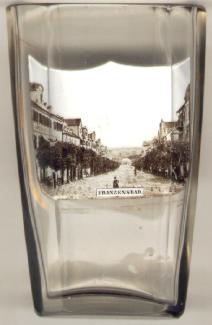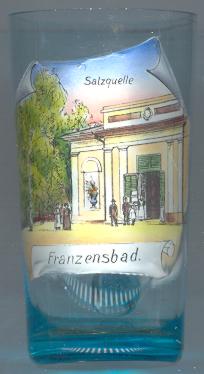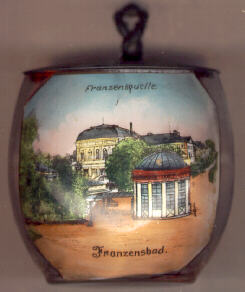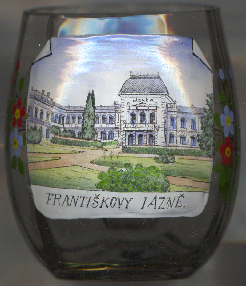

|
| ČESKÁ REPUBLIKA | CZECH REPUBLIC |
| Karlovarský kraj | Karlovy Vary region |
| Okres: Cheb |
 The famous spa town Františkovy Lázně (German: Franzensbad) is situated at an elevation of 450 m in the
Cheb (Eger) district of western Bohemia. The town has a population of about 5,200.
The famous spa town Františkovy Lázně (German: Franzensbad) is situated at an elevation of 450 m in the
Cheb (Eger) district of western Bohemia. The town has a population of about 5,200.
The mineral springs of Františkovy Lázně were mentioned as early as 1502, further reports date from 1542 and 1545. At first the waters were used only by the local population. The place became a spa town at the beginning of the 18th century. At that time the waters were already exported to other countries. The place was originally known as Egerer Sauerbrunn ('Cheb mineral springs'). The waters were also known as Schlaidner or Schlada-Säuerling ('mineral water of Schlada'—Schlada, in Czech Slatina, today is a town district of Františkovy Lázně). The formal foundation of the spa took place in 1793. At this occasion the village was renamed Kaiser Franzensdorf for Emperor Franz II from 1804 Emperor Franz I of Austria). In 1807 the town was finally renamed Franzensbad. In 1852 Franzensbad became an independent municipality. the mineral springs, however, remained a property of the city of Eger (Cheb) until 1904. During the late 19th century the town became one of the most popular spa places of Europe.
Out of the 24 mineral springs twelve are still used for therapeutic purposes. The springs supply waters that contain
bicarbonate, iron, sulfur, sodium sulfate and other minerals. Františkovy Lázně also was the
world's first mud bath spa.
In 2021, Františkovy Lázně
was listed by UNESCO as a World Cultural Heritage site (see list) as one of the "Great Spas of Europe",
together with
Baden (Austria),
Spa (Belgium),
Karlovy Vary and
Mariánské Lázné (Czech Republic),
Bad Ems,
Bad Kissingen and
Baden-Baden (Germany),
Montecatini Terme (Italy),
and Bath (United Kingdom).

The  Solný pramen (Salzquelle, Salt spring) [left, no. 1003]
was put into operation in 1819.
Solný pramen (Salzquelle, Salt spring) [left, no. 1003]
was put into operation in 1819.

The  Společeský dům (Gesellschaftshaus, Kursaal; Social House)
[near left, no. 343: background] was built in 1877. Today it houses a casino.
Společeský dům (Gesellschaftshaus, Kursaal; Social House)
[near left, no. 343: background] was built in 1877. Today it houses a casino.
The  Františkův pramen (Franzensquelle, František spring)
[near left, no. 343: foreground] was already known in the Middle Ages. The pavilion was built in 1832.
Františkův pramen (Franzensquelle, František spring)
[near left, no. 343: foreground] was already known in the Middle Ages. The pavilion was built in 1832.

The  Císařské lázně (Kaiserbad, Bad IV; Imperial spa)
[near left, no. 3955] was built 1872–1880 in Renaissance revival style by the architect
Gustav Wiedermann. The bathhouse opened in 1880. It is intersting that in the picture on glass no. 3955 the building
is labeled (in Czech) as LÁZNĚ IV, i.e. 'bathhouse IV'; this numbering also corresponds to old
postcards of the time. However, in some sources the bathhouse is named no. II.
Císařské lázně (Kaiserbad, Bad IV; Imperial spa)
[near left, no. 3955] was built 1872–1880 in Renaissance revival style by the architect
Gustav Wiedermann. The bathhouse opened in 1880. It is intersting that in the picture on glass no. 3955 the building
is labeled (in Czech) as LÁZNĚ IV, i.e. 'bathhouse IV'; this numbering also corresponds to old
postcards of the time. However, in some sources the bathhouse is named no. II.
[https://de.wikipedia.org/wiki/Gustav_Wiedermann, https://frantiskolazensko.cz/was-zu-tun-in-franzensbad/das-kaiserbad/]
![[scale]](lineal.jpg)